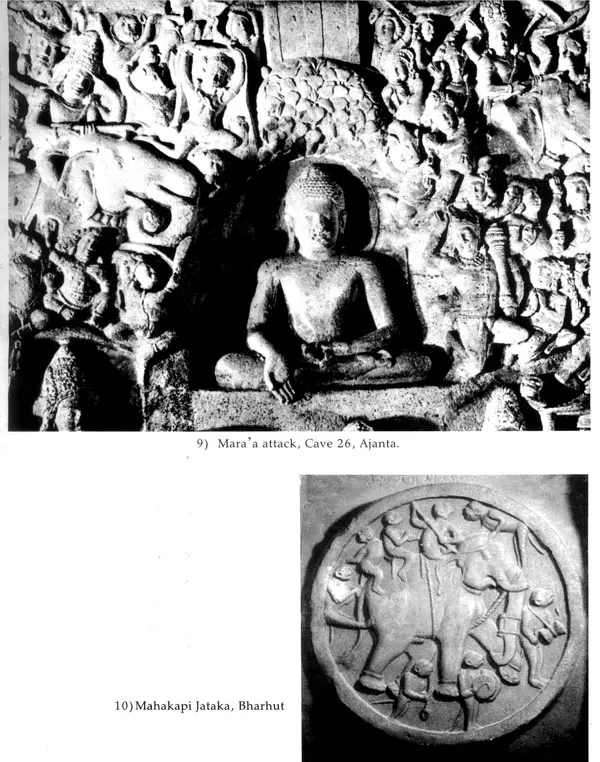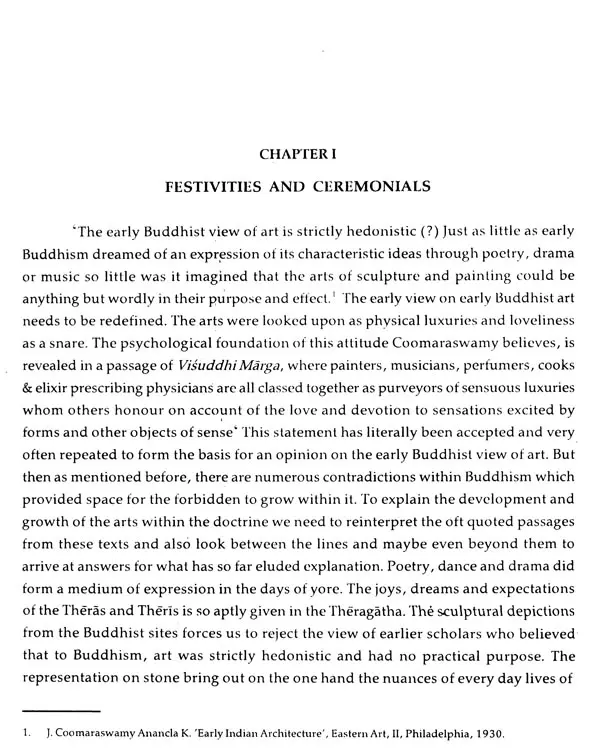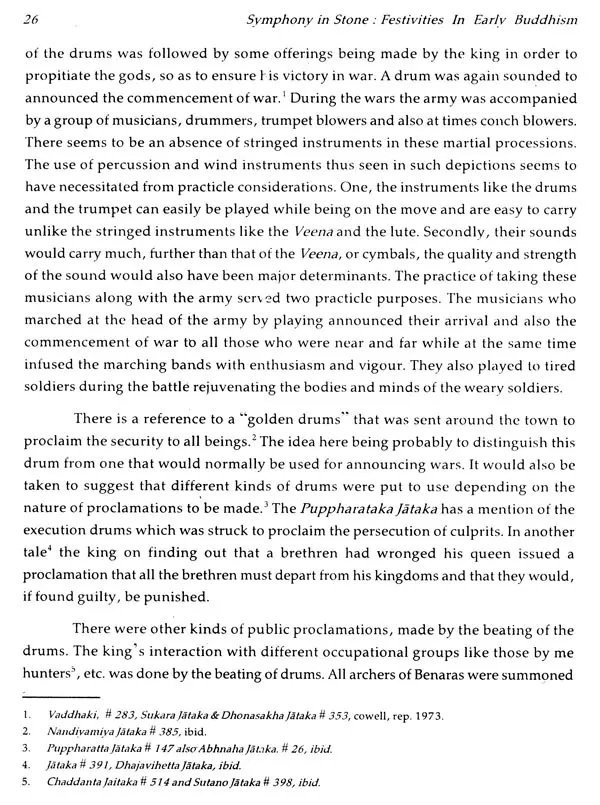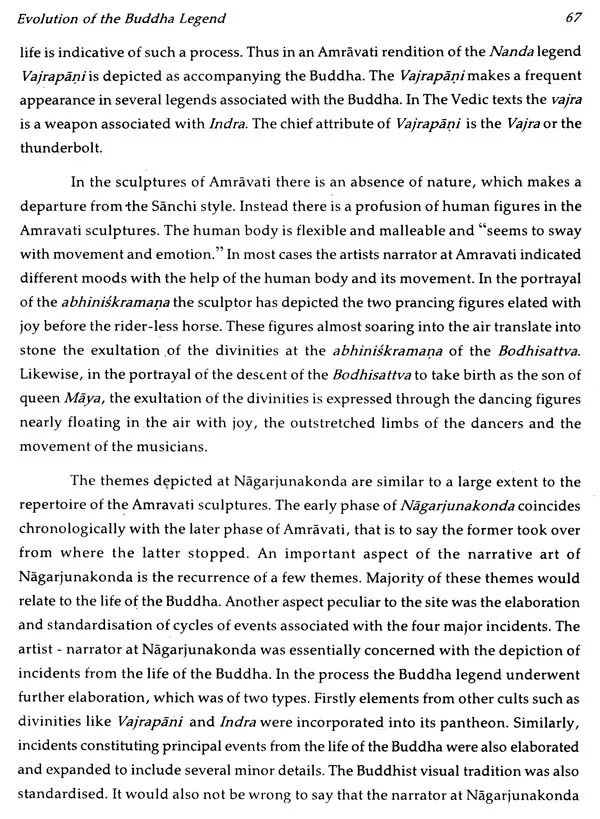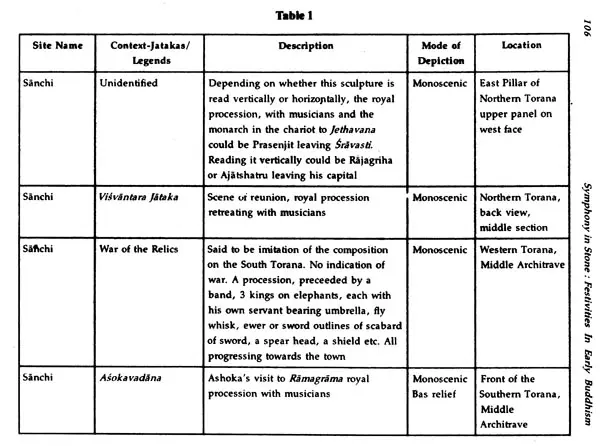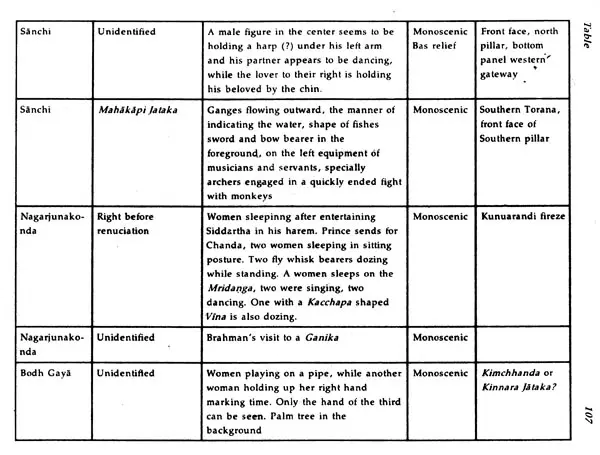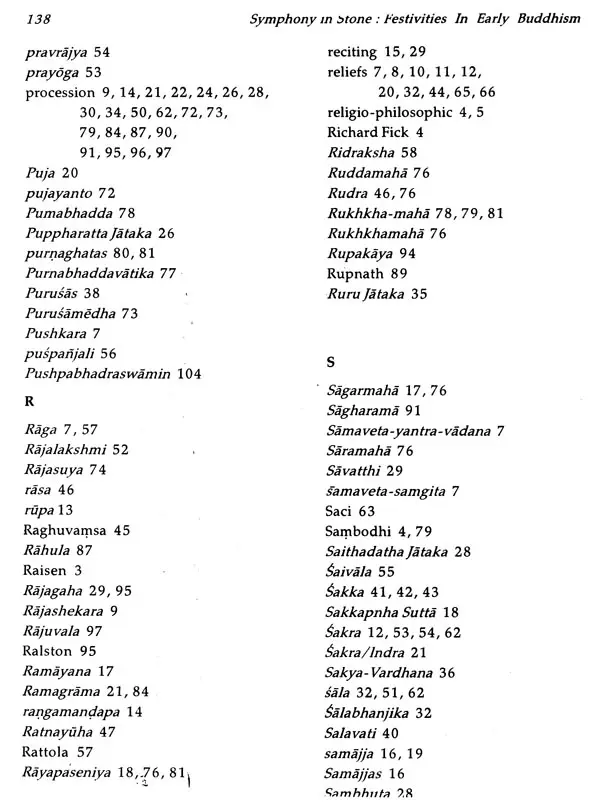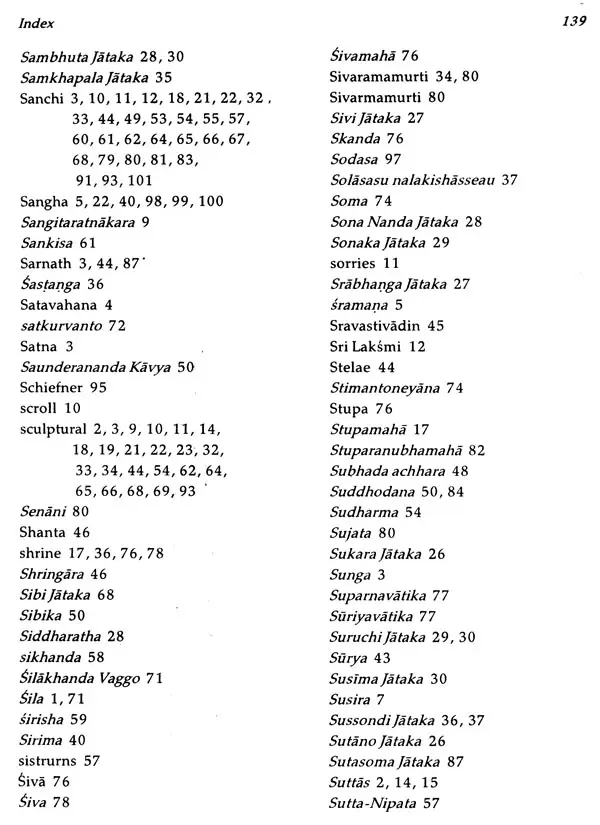
Symphony in Stone: Festivities in Early Buddhism
Book Specification
| Item Code: | UAD232 |
| Author: | Garima Kaushik |
| Publisher: | Literary Circle, Jaipur |
| Language: | English |
| Edition: | 2007 |
| ISBN: | 81820363 |
| Pages: | 148 (22 B/w Illustrations) |
| Cover: | HARDCOVER |
| Other Details | 10.00 X 7.50 inch |
| Weight | 620 gm |
Book Description
Contrary to popularly projected view and accepted beliefs, one does find in the sculptured delineations associated with early Buddhist architecture and contemporaneous Buddhist literature. evidence and references, albeit marginal, to dance and musical instruments.
The aim of this study is to bring out the underlying contradiction between canonical precepts and actual practices as is evident from sculptural representations: and to study the various contexts in which dance and music existed in Theravada Buddhism.
This study attempts to document and classify the existing references through archaeological (painting and sculptures), literary (primarily non-canonical texts, like the biographies of the Buddha, The Jatakas, travelogues of the Chinese travelers etc.) and epigraphic evidences and to sort them according to the rules of conduct for the monastic as well as the lay mode of living.
A Cursory study of the sculptural and literary evidences representing dance and music have been classified, based on the themes they represent into three categories, which form the basis of the three chapters of this book. These are:
Chapter 1. Festivities and Ceremonials:
It discusses under its head three categories of representations. They are all secular scenes which include:
I} Musicians and/or dancers accompanying royal processions.
2} Court scenes, which also include the Hare scenes.
3} Depictions of the Buddha's previous lives (Jatakas), in association with dance and music e.g. The Mahakapi Jataka, where musicians and archers are engaged in a fight with monkeys.
Chapter 2. Evolution of the Buddha Legend In this chapter, the gradual incorporation of dance and music within and as a part of the biographical narrative of the Buddha has been discussed. It discusses how this incorporation was undertaken over a long period while also discussing the assimilation and significance of mythical creatures within the narratives of Buddhas live's.
Chapter 3. Worship of the Buddha. It discusses the worship of the Buddha in accompaniment with dance and music. It gives a detailed description of all the festivals in which music and dance figured prominently.
These Chapters are an attempt to study the gradual incorporation and evolution of festivities ( that include dance and music) within Early (Theravada) Buddhism.
Contrary to the popularly projected view and accepted beliefs one does find in the sculptured delineations associated with early Buddhist architecture and contemporaneous Buddhist literature, evidence and references, albeit marginal, to dance and musical instruments. The sudden efflorescence of dance and music as an integral part of the subsequent Buddhist doctrine has been studied by historians. These studies pertain to the identification of the dance forms and its relation to the Mahayanic and Vajrayanic forms of Buddhism. They are primarily historical works, attempting to study the evolution of dance as a part of Buddhist rituals. Recent studies pertaining to dance in relation to Budhism are of the nature of ethno-historical studies in which emphasis has primarily been on studying NewarBudhism2 (Nepal), Tibetan Buddhism and also Buddhism in Central and South East Asia. David Cellner in his work Monk, householder, Is tantric Priest, has documented numerous ritual contexts in which dance occurs. Miranda Shaws ' paper - Nepalese Buddhist dance, can be . seen as an extension of Cellner's work, where she has on the basis of interviews, . observance of dance and exploration of the' associated literature and iconography attempted to delve deeper into the subject. Icier study though starts with a brief overview of dance in early Buddhism, before she focuses on the main theme, which is Nepalese Buddhist dance. On the basis of some early historical Buddhist literature like the Lalitevistare, sculptural depictions and also epigraphic evidence she comes to the conclusion that dance had auspicious, reverential and celebratory connotations. Dance and music and its role in early Buddhism have escaped the notice of the historian.
This could be primarily because the canonical literature which may have set the ethical and moral standards of the day and age did not talk of festivities in a positive manner, except for one episode. i.e. instance of the Mahepanirvene is the Mehaparinnibbanne Suttante, Sacred Books of the East-Max Mueller, Buddhist Suttas Vol Xl p. 125 (Stanza- 33). Festivities are generally associated with Brahmanism and therefore subsequent historians may have found the idea of connecting the two i.e. (Buddhism and festivities) far fetched.
The aim of this study is to bring out the underlying contradiction between canonical precepts and actual practices as evident from sculptural representation, and to study the various contexts in which dance and music existed in Theravada Buddhism.
This study attempts to bring out and document the existing references through archaeological (paintings and sculptures), literary (primarily non canonical texts, e.g. texts on the life of the Buddha, frisks, accounts of the travelers etc.) and also epigraphic evidences and to classify them according to the rules of conduct for the monastic as well as the lay mode of living. The archaeological data reflects the actual prevalent societal conditions, which at times were not in conformity with the norms laid out in the canons. This is further complemented by matter derived from non- canonical texts, which exist in the form of similes, stories, direct verbal statements and objective observations, very little -material being directly in the form of a sociological description.
Book's Contents and Sample Pages


